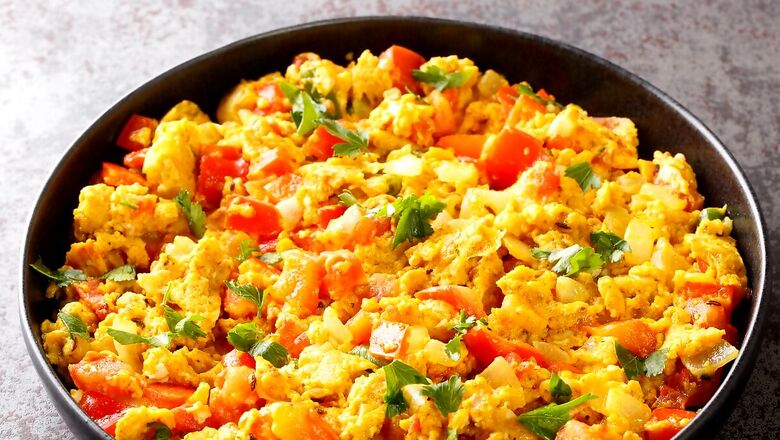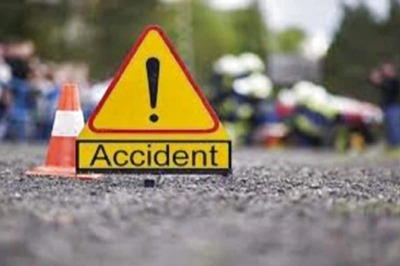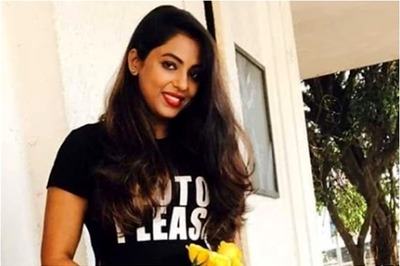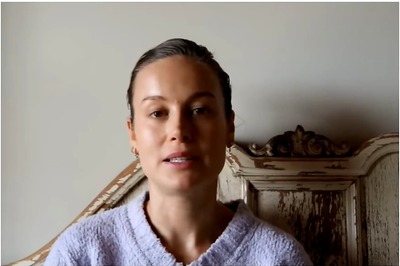
views
What can I say about eggs. I think there is nothing as emancipating as eggs are, because when there is no food of any kind in the kitchen, there is egg. When you want to cook a proper meal in less than five minutes, there is egg. Whether you want the meal to be Western or desi, there is egg.
Egg is the most versatile and whimsical food you will ever know. An egg, with the application of heat, ingredients and imagination can mutate into delicious forms, shapes and tastes that possibly no other food can.
In just a few seconds, it can be transformed on a pan with butter into a sunny fried egg; in a few more minutes, with some milk and gentle heat eggs can be petrified into a creamy scrambled; if boiled in its plenary form, eggs become great balls of goodness; and when whisked and fried, eggs can become a pancake like omelette or frittatas; and if you keep agitating the eggs before they settle into an omelette, you get a bhurji and much, much more.
The eggs I grew up eating, all through my days of struggle, were the good old desi bhurji. Don’t get me wrong when I say ‘my days of struggle’, I was just struggling to get through college. And Ramesh’s Canteen at Sir JJ School of Art, where I spent five years of my life, made the best anda bhurji I have ever eaten.
I just like the idea of being able to break a few eggs and make it into a wholesome complete Indian flavoured dish. Assured with spices, fried onions, green chillies, to the anda bhurji, if you add ginger-garlic as well… my, my! It is the best thing you could ever eat with bread, chapathi, toast, paratha.
In my little experience, I would claim that, however bad a cook you may be, there is little you can do to ruin a simple anda bhurji. It is the simplest and tastiest meal you can scuttle together in a couple of minutes. All it takes is chopped onion, green chillies and a few spiced tossed into oil and a few eggs cracked into the mixture.
The only problem when you eat a bhurji on the streets is that they often use too much oil, and cook the eggs really fast and hard, which is why the bhurji becomes a bit like a very oily shredded omelette rather than a spiced scrambled. What you do need is a bit of artful patience.
Of course, if you decide to apply some art to the anda bhurji, a little perseverance and finer ingredients, you can make a Parsi-style akuri.
Now, please do not confuse the two. Just because both beat eggs together with onion and spices does not make the akuri and bhurji synonymous. In my short life on Earth, I have eaten a couple of varieties of Parsi akuris. I simply call them the ‘yellow and green akuri’ and the ‘brown akuri’. Both are made by whisking eggs on a really slow flame till soft, creamy and slightly sticky.
In the ‘yellow and green akuri’, eggs are scrambled with sautéed onion, and spiced just with turmeric, green chillies, and an extravagance of finely chopped coriander. While in what I call the ‘brown akuri’, eggs are slowly agitated, with golden fried onion, green chillies, sometimes finely chopped tomatoes, and spiced with ginger garlic, red chili powder, dhania-jeera powder, and if you feel like it, even some dhansak masala. The result is a golden brown, deliciously viscous, custard like dish, that is a meal in itself.
So popular is the idea of enlivening eggs into a kind of spiced non-vegetarian sabzi, that the bhurji takes different forms is a few other parts of the country as well. For instance, the ande ka khagina from Hyderabad. It’s pretty much a bhurji but with Hyderabad’s own flavours and personality. Here you cut onions into thin slices and fry them, adding coriander, salt, turmeric powder, chilly, tomatoes and water to make a gravy. Once the gravy is ready, beaten eggs are added to the gravy and mixed till soft and thick. It’s quite delicious with hot chapathis, naan or parathas.
Then there is the Tamilian muttai poriyal. It’s the south Indian version of the bhurji. The tadka is typically south Indian with mustard seeds and cumin, gram dal and urad dal, chopped chillies, chopped onions and curry leaves and turmeric powder. To this add the beaten eggs and start mixing, till you are satisfied with the consistency. Some homes, make the muttai poriyal with grated radish, and is called mullangi muttai poriyal, or peerkangai muttai poriyal with ridge gourd.
Once you master the basic anda bhurji, you can decide to add anything to these spicy scrambled eggs. You can add cooked minced meat and make a kheema ghotala, or cooked goat brains and make a bheja bhurji. You can add stale shredded rotis and make a kuthu paratha, or you can add last night’s rice and make one of south India’s favourite street side dish, rottu kadai or egg rice.
If you don’t like eggs, you can make a bhurji with paneer, soya or even chick peas, but then you have just wasted your time reading my column. So anda zindabad, and three cheers for the bhurji.
The greatest thing about the anda bhurji is that its recipe is limited only by your imagination.
Kunal Vijayakar is a food writer based in Mumbai. He tweets @kunalvijayakar and can be followed on Instagram @kunalvijayakar. His YouTube channel is called Khaane Mein Kya Hai. The views expressed in this article are those of the author and do not represent the stand of this publication.



















Comments
0 comment